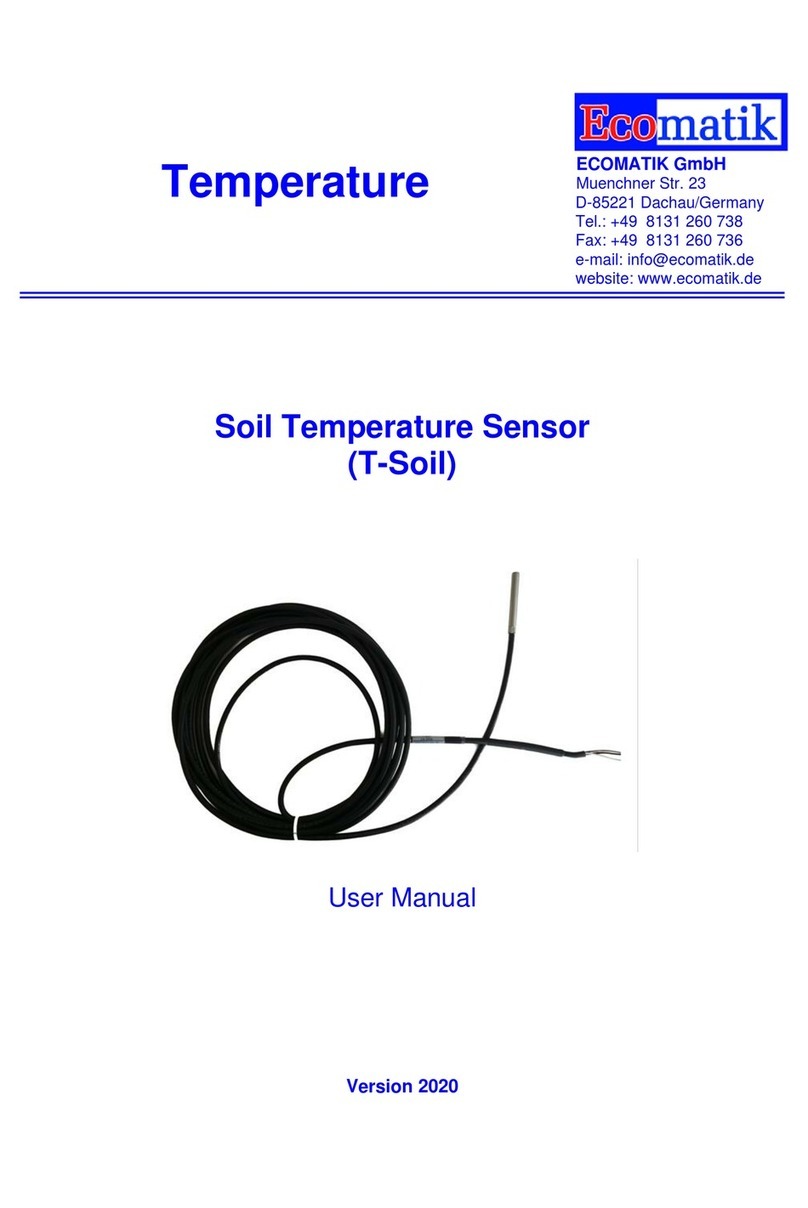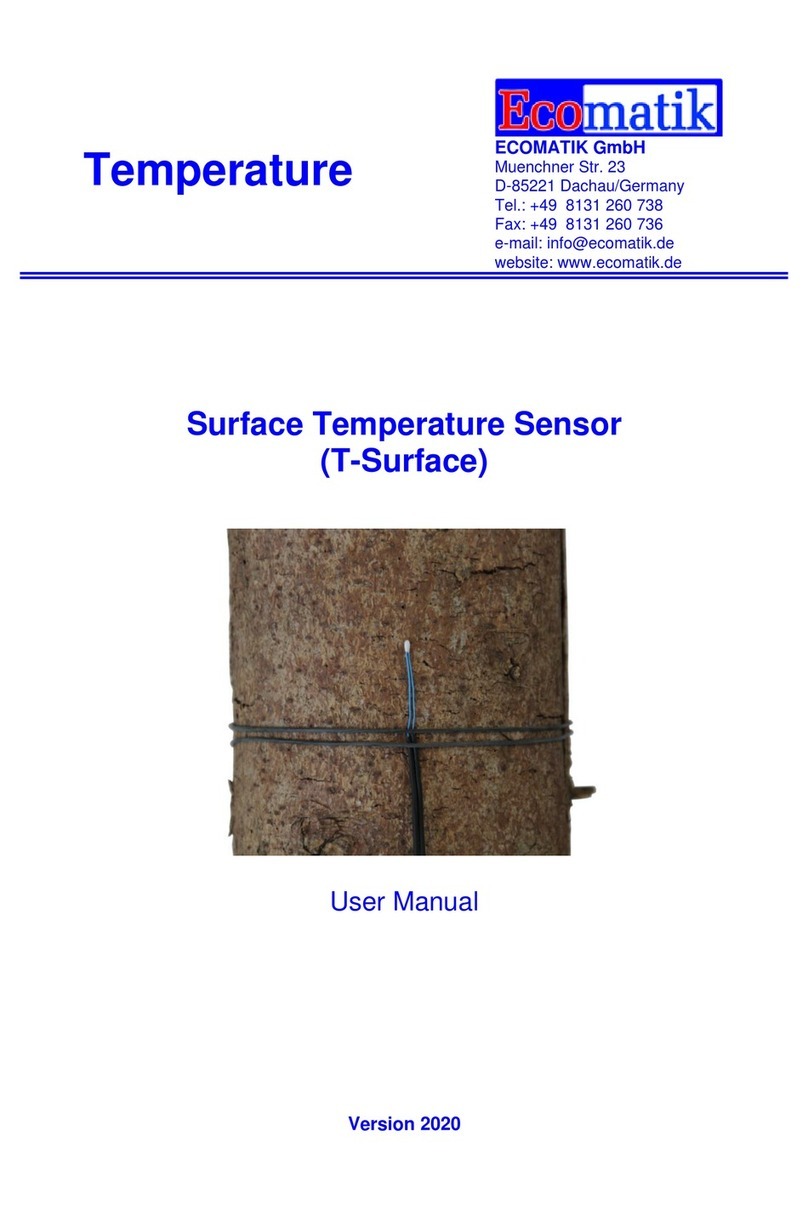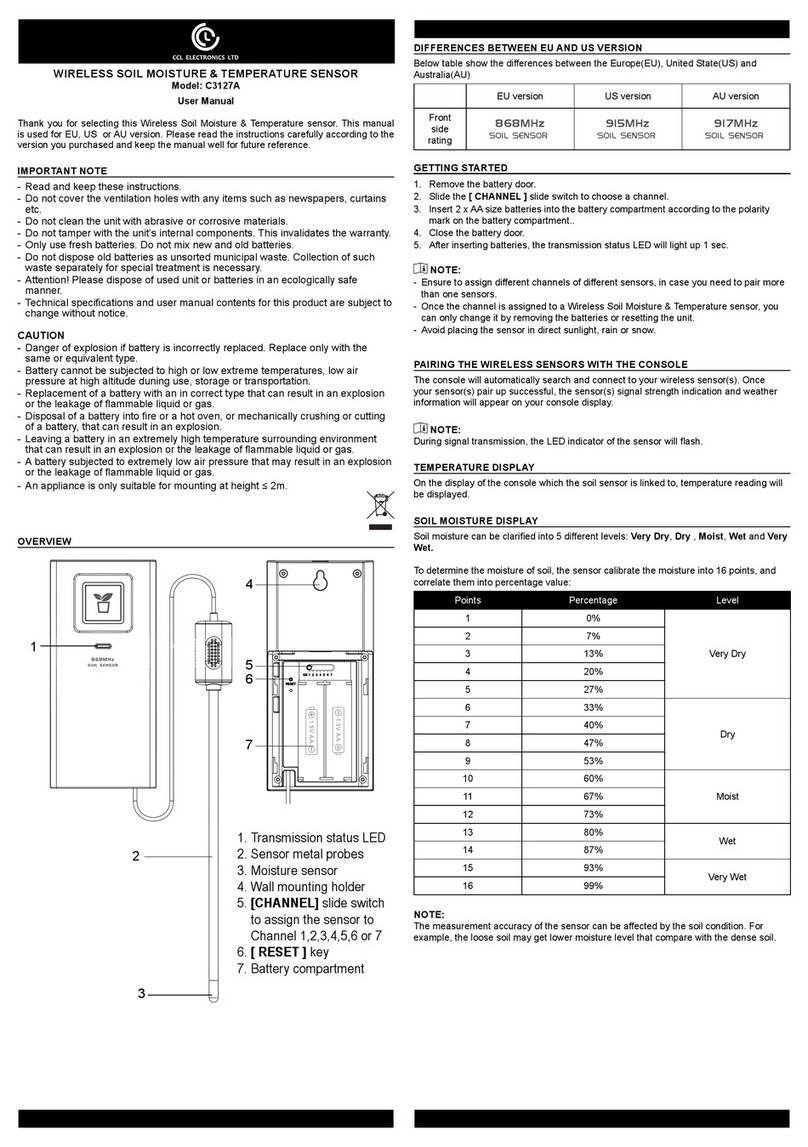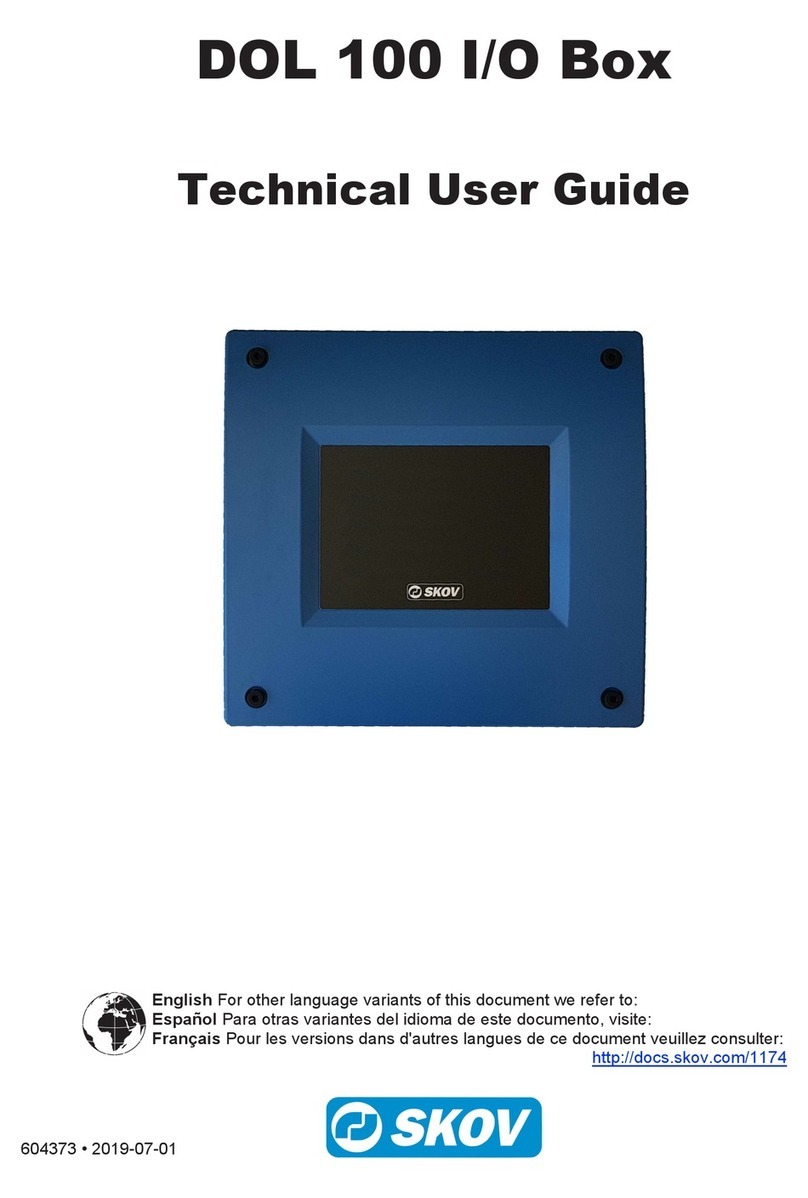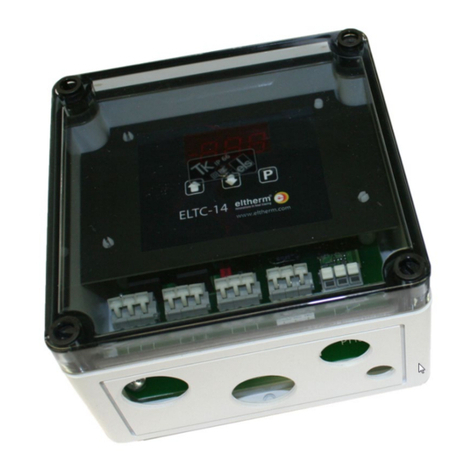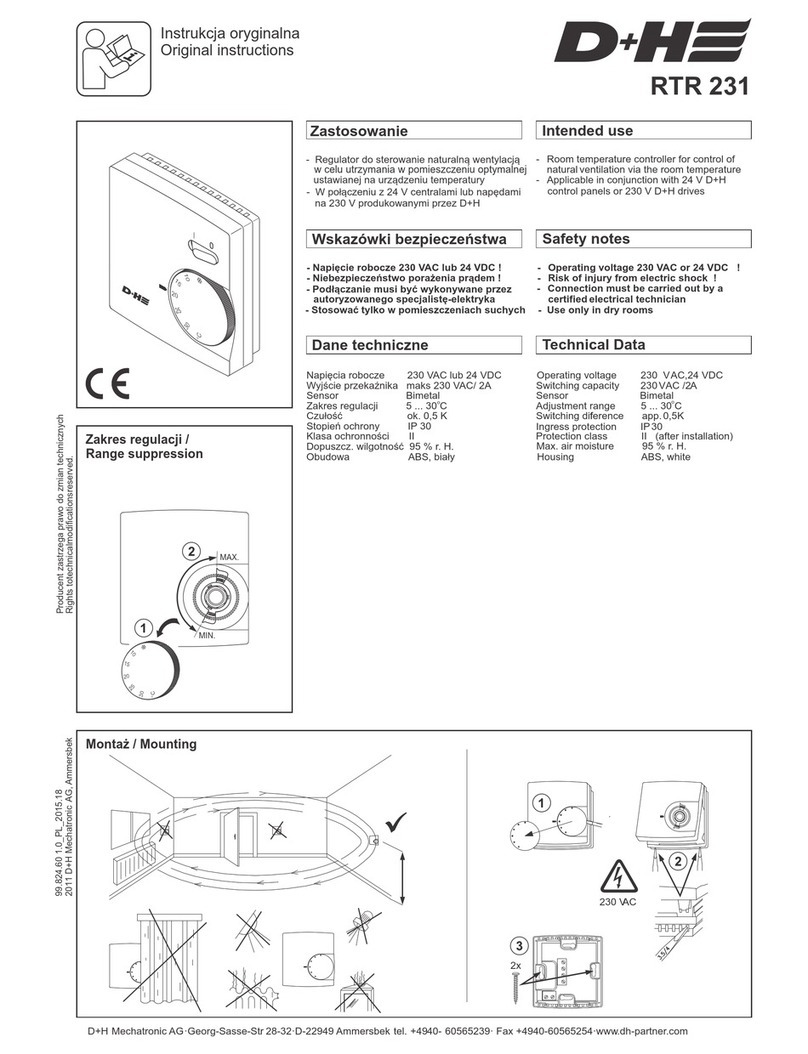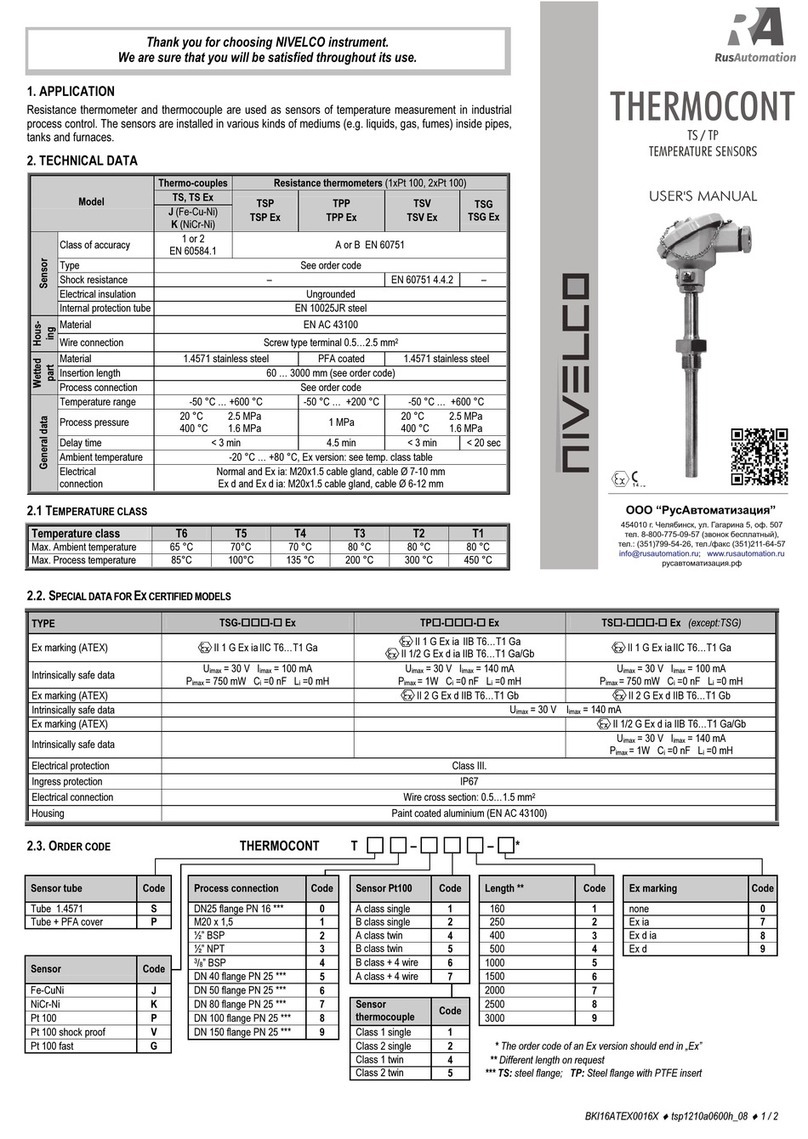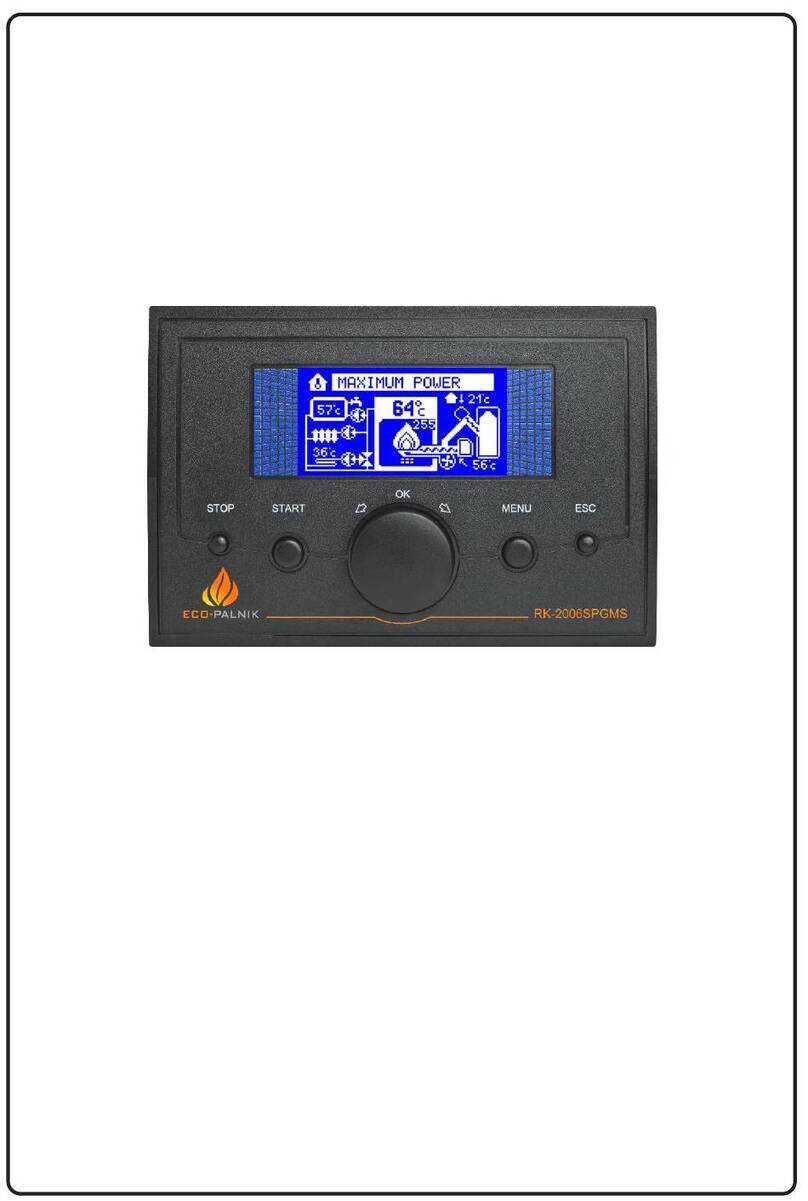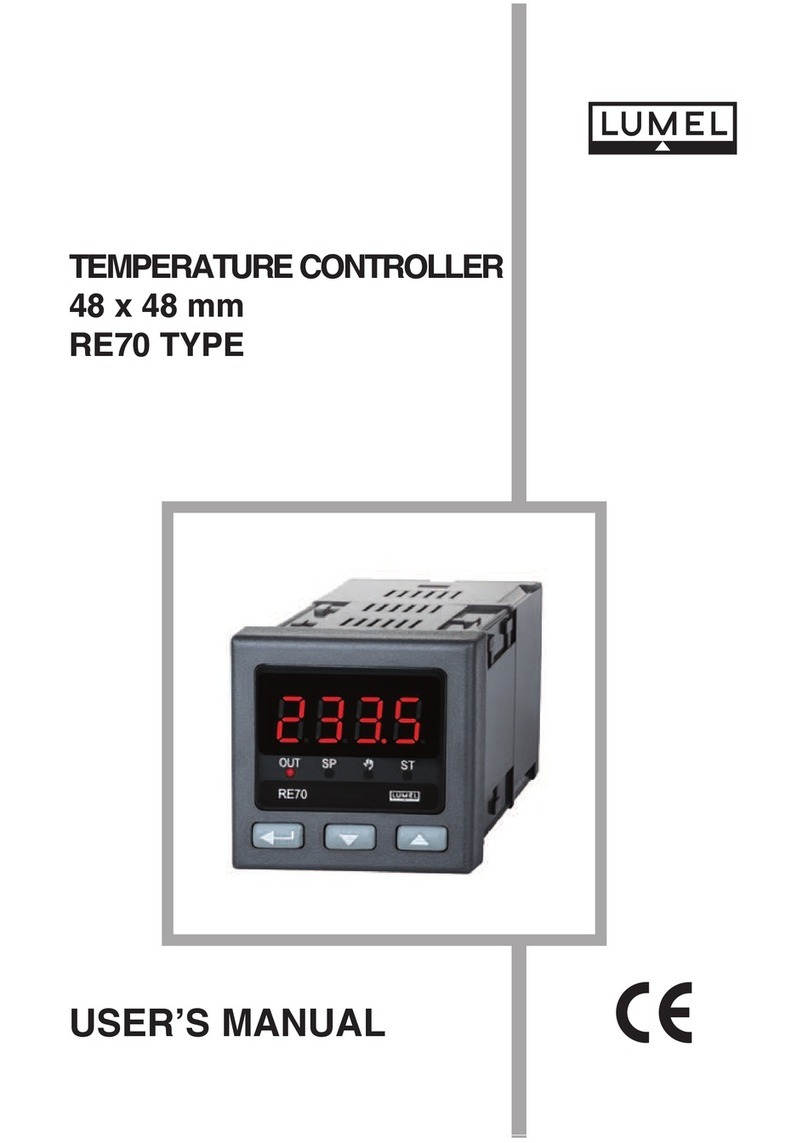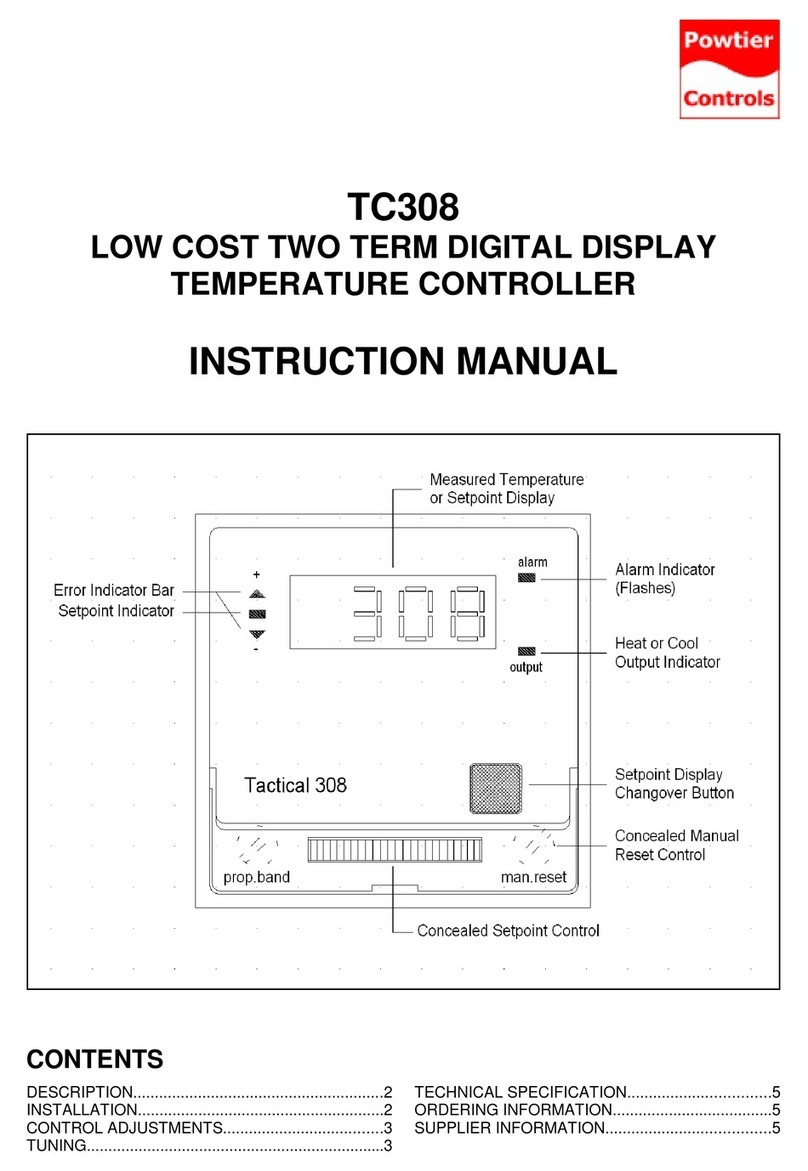Ecomatik T-Tissue User manual

Temperature
ECOMATIK GmbH
Muenchner Str. 23
D-85221 Dachau/Germany
Tel.: +49 8131 260 738
Fax: +49 8131 260 736
website: www.ecomatik.de
Tissue Temperature Sensor
(T-Tissue)
User Manual
Version 2020

T-Tissue Sensor
1
1. Introduction
Thank you for purchasing the Ecomatik temperature sensor for internal tissues (T-Tissue).
The T-Tissue is a minimally invasive and highly precise microprobe, for the continuous
measurement of internal temperature (e.g. tree cambium, internal fruit temperature, etc.).
This manual is written to help you install and operate your T-Tissue sensor without
difficulty and to achieve the most desirable results. Please read it carefully before
installing the sensor, and refer back to it if you should have any difficulty with the sensor in
the future.
The T-Tissue is the sensor part of the measuring system. This means that the T-Tissue
sensor must be installed into the soil or underwater, and connected to a data logger for
continuous data recording. The T-Tissue sensor is compatible with a range of available
data loggers.
2. Product Description
As shown below, a standard version of the T-Tissue sensor consists of:
- 1x Sensor with 5 m cable. The cable length can be extended up to max. 50 m.
- 1x piece UV-resistant rubber cord, for pull release fixation of the sensor cable.
T-Tissue sensor
3. Installation & Safety Information
Important!
Please avoid any tension between the sensor, sensor cable and data logger. The
installation must be strain relieved on both sides, sensor and data logger. Pay attention to
connect the sensor wires correctly to the data logger. Wrong connections will provide
wrong readings.

T-Tissue Sensor
2
Installation
1. Fix the sensor cable at the measurement
object (e.g. stem or branch) by using the
included elastic and UV-resistant rubber
band.
2. Additionally fix the end of the sensor cable
with the sensor head, nearby the desired
measurement position by using the
included elastic and UV-resistant rubber
band.
3. Leave about 30 cm of additional cable
slackly hanging between the two above
described fixation points, so that the
sensor head is free of any pulling force.
4. In case there should be no non-invasive possibility to insert the microprobe into the
desired tissue/measurement depth, drill a small hole with a diameter of 1 mm to the
desired measurement depth.
5. In case of a surface-near measurement depth, the installation hole should be drilled at
a flat angle to the surface of the object. This way, the internal measuring point is at
least a few centimeters away from the opening of the borehole and possible
perturbations of measurement can be avoided.
6. Insert the microprobe into the object/tissue until the head of the probe reaches desired
measurement depth.
7. In case you drilled an installation hole, seal the installation hole and fix the thin wire of
the microprobe by using the included sealing compound. Please note: the surface
around the installation hole must be dry and dust-free in order to achieve the best
possible adhesion of the sealing compound.
8. Strain relieve the sensor cable leading to the data logger as close as possible to the
instrumented measurement object, e.g. on a peg firmly hammered into the ground.
You need further assistance?
In case you need further assistance for installation, please do not hesitate to contact us.
4. Wiring and Logger Configuration
The T-Tissue sensor is compatible with our DL 18 data logger (ordered with stereo plug),
as well as with a wide range of other available data loggers, e.g. CR1000 (ordered with
bare cable ends). However, note that suitable loggers have to provide a precise and
stable, switched (sensor should only be powered 100ms before and during measurements)
excitation voltage (Vex) of usually 2500 mV.
Connecting the sensor with bare cable ends, e.g. to a CR1000 logger:
The sensor can be connected either in differential (wiring diagram a), or in single-ended
(wiring diagram b) mode.
T-Tissue sensor non-invasively inserted into an
opening bud.

T-Tissue Sensor
3
Figure A: Differential wiring
Figure B: Single-ended wiring
Wiring Examples:
Campbell Data Logger (CR1000)
This section describes how to connect the T-Tissue sensor to the widely used Campbell
data logger CR1000. If you use another data logger, contact us in case you need further
assistance. The T-Tissue sensor can be connected in differential voltage as well
as in single-ended voltage mode, measurement range must be set to 2500 mV. One
CR1000 can record up to eight T-Tissue sensors in differential mode, or sixteen T-Tissue
sensors in single-ended mode.
Differential Voltage Mode T-Tissue sensor
Connection
Cable Color
Input Port
1st T-Tissue
sensor
VT-Tissue
White
Vx1
Brown
1H
Black
1L and Signal Ground
Program Syntax (exemplifying one sensor, with conversion of raw voltage signal in °C)
VoltDiff(T_Soil,1,mV2500,2,True,0,_50Hz,1,0)
T_Soil=(2500-T_Soil)/T_Air*20000
T_Soil=1/(0,001130756+0,000233897*LN(T_Soil)+0,000000088*LN(T_Soil)^3)-273.15
DL 18 data logger
Ordered with stereo plug connector, the T-Tissue is compatible with our DL 18 data logger.
Each T-Tissue sensor requires one of the four channels of the DL 18. For further
information on DL 18 configuration for T-Tissue sensors, please refer to our DL18 manual.
Configured correctly, sensor signals will be stored in V. Values in °C can be calculated
from stored measurement values as described in the following section (Excel program for
data calculation available on request).
5. Manual Data Calculation
In case that the used logger does not support complex conversion procedures of the raw
measurement values, stored values have to be converted manually after data download
from the logger (e.g. DL 18 logger).

T-Tissue Sensor
4
The following function applies to convert the analog output signal of the T-Tissue sensor
from V into Ω:
Rntc=(Vex-Vout)/Vout*20000
where:
Rntc: NTC sensor resistance in Ωcorresponding to the respective mV measurement signal
Vex: excitation Voltage in V (e.g. for DL 18 logger Vex = 2.5 V)
Vout: measured sensor output signal in V, ranging between 0 and Vex
The following function applies to convert the analog output signal from Ω into °C:
T (°C)= 1/(a + b(Ln Rntc) + c(Ln Rntc)^3)-273.15 (Steinhart-Hart equation)
where:
T: temperature in °C Rntc: sensor resistance in Ωat temperature T
a: coefficient = 1.13075635 E-03
b: coefficient = 2.33896902 E-04
c: coefficient = 8.82996895 E-08
6. Technical Specifications
Name
T-Tissue
Application
Internal (tissue) temperature
Range of the sensor
-40 to 70°C
Accuracy
+/- 0.2 °C
Resolution
Theoretically infinite, depends on data logger
Size and weight
Cylindric, length 3.3 mm, diameter 0.5mm,
5g (only sensor tip without cable)
Output signal type
Within below specified operating conditions: voltage between 333 to 2300
mV, when supplying the sensor with 2500 mV
Power supply
Excitation voltage Vex usually switched 2500 mV, power up 100ms max.
Power consumption negligible.
Operating conditions
Temperature: -40 to 70 °C
Table of contents
Other Ecomatik Temperature Controllers manuals
Popular Temperature Controllers manuals by other brands
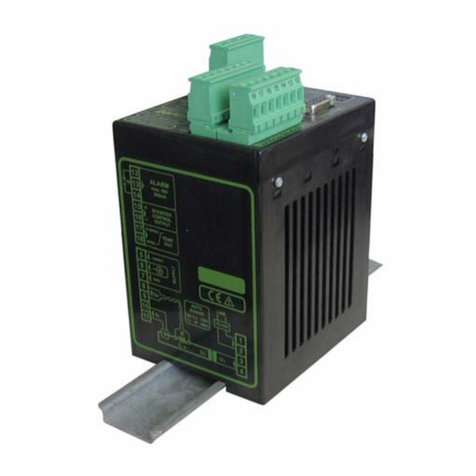
Ropex
Ropex CIRUS UPT-606 operating instructions

Oregon Scientific
Oregon Scientific THGN132ES user manual
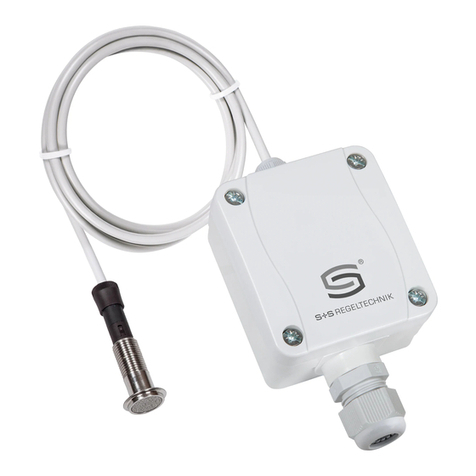
S+S Regeltechnik
S+S Regeltechnik HYGRASGARD VFF Operating Instructions, Mounting & Installation
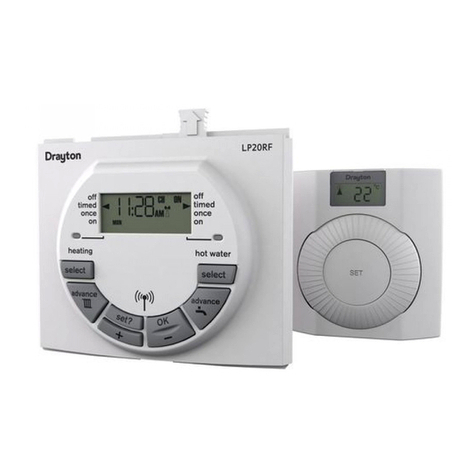
Drayton
Drayton LP20RF Installation & user guide
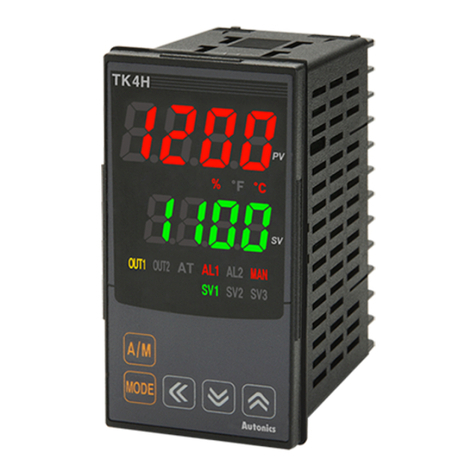
Autonics
Autonics TK Series user manual
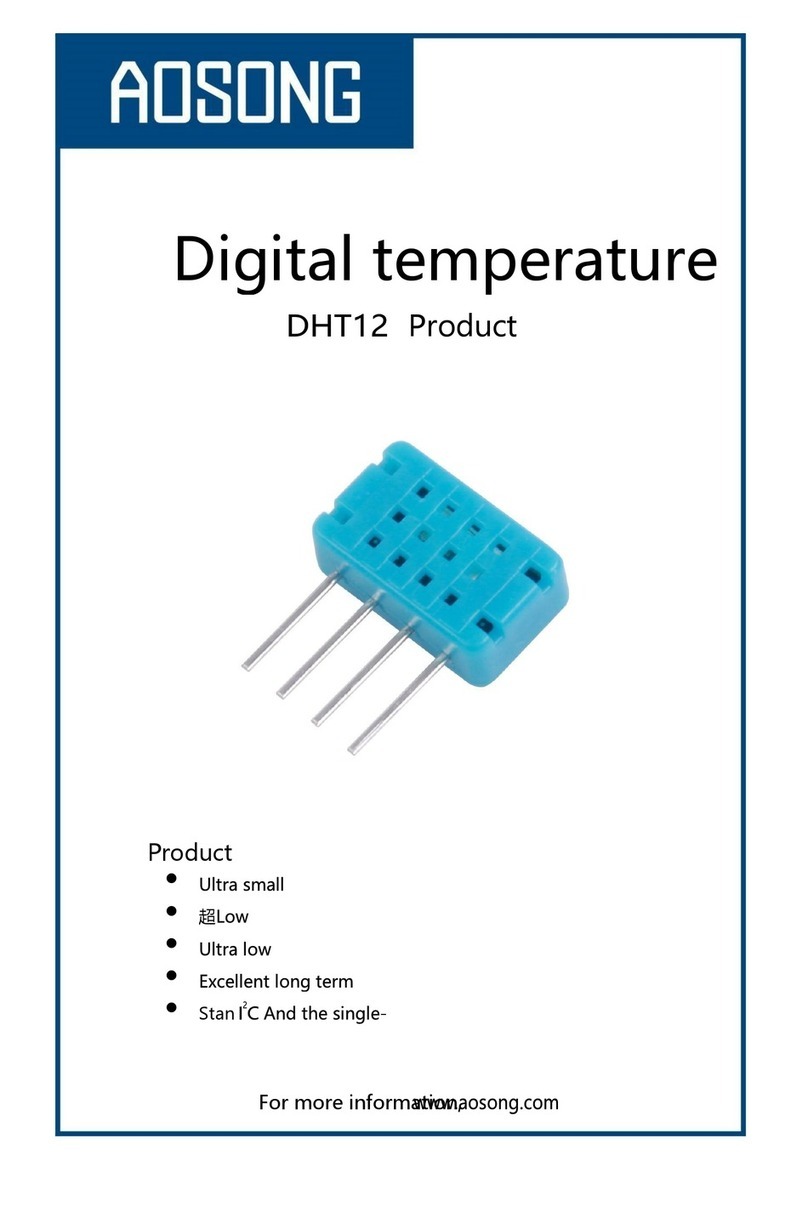
aosong
aosong DHT12 manual
